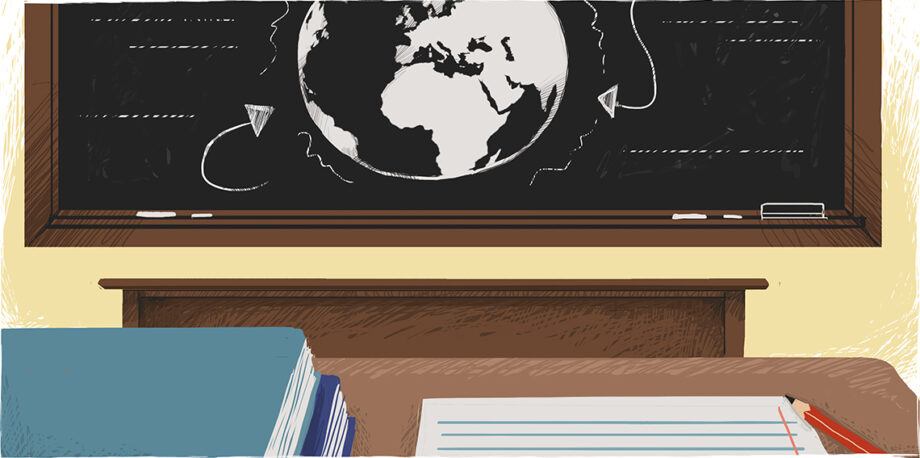December 16, 2014 — The international community has pledged up to $100 billion per year by 2020 to the U.N.’s Green Climate Fund — much of which has, to date, primarily been dedicated to mitigation and adaptation investments, mainly engineering projects for building seawalls, flood defenses or water management systems. While such structural adaptation measures may be unavoidable under certain circumstances, they are expensive, rigid and dependent on large technological systems. Additionally, with high uncertainty regarding future climate change in specific locations, heavy concrete and immobile investments can “lock” countries into undesirable paths of development and increase vulnerability. A better, or congruent, approach is investment in human capital as a way to empower individuals and communities, reduce vulnerability, and enhance adaptive capacity in times of changing climate. Education plays a significant role in reducing vulnerability both in direct and indirect ways. Directly, formal education raises the efficacy of individuals’ cognitive processes and logical reasoning, which are both crucial in improving adaptive capacity. Literacy and numerical skills as well as general capacity for abstract thinking are obtained through formal education, which implies better understanding and ability to process risk information such as weather forecasts or emergency warnings. Likewise, it is well documented that educated individuals generally tend to perform better in practical problem solving and have greater capacity to plan for the future and to improve allocation of resources — just a few qualities that are useful in coping with climate change. Also, there is evidence that the more educated tend to have greater risk awareness because they better understand the consequences of their actions, as in the case of smoking and cancer prevention. Apart from direct impacts, education can also reduce vulnerability through improving socioeconomic status, allowing individuals to carry out risk reduction or adaptation measures such as purchasing disaster insurance, moving to low-risk areas and living in quality housing. And there are likely to be spillover effects of education at the community and societal level. Opportunities for social interaction with more-educated people can speed up the diffusion of information and knowledge or foster access to institutions that favor vulnerability reduction. We see this in the case of lower infant mortality in communities with higher female education. Additionally, societies with greater human capital undeniably enjoy more solid economic growth, higher life expectancy and higher degree of democracy — social, economic and institutional capabilities necessary for successful adaptation to climate change.
Our study illustrates how alternative future trajectories in education lead to greatly differing numbers of expected deaths due to climate change.
In short, when facing natural hazards or climate risks, educated individuals, communities and societies are more empowered and consequently more able to cope with climate variability and extreme events. Strengthening human capacity, primarily through public investment in education, thus allows societies to develop the most effective long-term defense against the dangers of climate change. Nevertheless, the idea of investing in education has not been put forward. Instead, a popular belief — especially among economists — that vulnerability has to do with low income or gross domestic product has been prominent. Consequently, in addition to infrastructure spending, a focus on income generation or subsidized insurance against risk has dominated climate change adaptation strategy discussions, instead of a focus on basic education and cultivating relevant knowledge and skills. Investment in human capital is a far more effective way to reduce vulnerability to climate change. Indeed, a study we recently published in Science explicitly shows that education is more important than GDP in reducing mortality from natural disasters. Drawing upon extensive analysis of natural disaster data for 167 countries over the past four decades and applying the latest generation of Intergovernmental Panel on Climate Change–related socioeconomic scenarios, the Shared Socioeconomic Pathways, our study illustrates how alternative future trajectories in education lead to greatly differing numbers of expected deaths due to climate change. At this point, it appears that Green Climate Fund resources are destined to support engineering projects or agricultural strategies for adaptation. Such efforts are certainly vitally important. But in light of the major uncertainties about climate change impacts, it is as important to invest some of the funds in mechanisms that will empower people to flexibly adapt to whatever changes might occur. ![]()
Editor’s note: The views expressed here are those of the author and not necessarily of Ensia. We present them to further discussion around important topics. We encourage you to respond with a comment below, following our commenting guidelines, which can be found here. In addition, you might consider submitting a Voices piece of your own. See Ensia’s “Contact” page for submission guidelines.
Ensia shares solutions-focused stories free of charge through our online magazine and partner media. That means audiences around the world have ready access to stories that can — and do — help them shape a better future. If you value our work, please show your support today.
Yes, I'll support Ensia!


